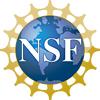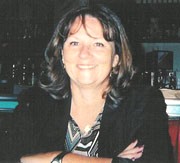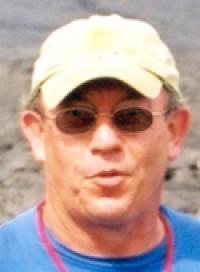A Workshop for a Cross-Disciplinary Program for Disaster Resilience, Vulnerability, and Risk Reduction

Despite significant advancement in our understanding of natural hazards and disasters within specific scientific disciplines, the United States continues to experience increasing losses. There is much evidence to suggest that our communities becoming more vulnerable and less disaster resilient. The scientific consensus is that disasters result from the interaction between physical, built, and social systems and yet the science is generally funded and conducted within disciplinary areas. To explicitly promote and advance our knowledge of the fundamental physical, social and engineering processes associated with natural and technological hazards an interdisciplinary workshop of leading natural hazard and disaster researchers will be conducted to address the creation of new cross-directorate program focused on disaster resilience, vulnerability, and risk reduction. This new multidisciplinary initiative is being proposed by three directorates within the National Science Foundation (NSF) – Engineering (ENG); Geosciences (GEO); and Social, Behavioral and Economic Sciences (SBE).
The workshop will draw together leading hazard and disaster researchers from engineering, geosciences, and social, behavioral and economic sciences to provide input to the National Science Foundation about the nature, goals, and structure of this new program. The workshop will take steps toward the development of a framework for such a cross-disciplinary program. The framework will identify the core research themes and research questions related to resiliency, vulnerability, and risk reduction. Some key issues to be addressed include: 1) the identification of interdisciplinary research agendas involving engineering, geoscience, and social, behavioral and economic sciences and 2) the potential need for new research and data collection approaches to enhance longitudinal research capable of modeling and monitoring processes associated with changes in resiliency, vulnerability, and risk perceptions. The workshop will be held at the National Science Foundation in early June of 2011.
Background documentation
I. Basic documentation on
the workshop
A Workshop on a New
Cross-Directorate Program on Disaster Resilience, Vulnerability, and
Risk Reduction.(Workshop for
DRVRR.pdf)
II. The call for this new program
focusing on disaster resilience, vulnerability, and disaster
reduction is consistent with a host of recent events and publications
calling for a more comprehensive approach to disaster and hazards
related research. Some of these include:
- Disasters by Design, (Mileti 1999), which summarized the central findings and perspectives emerging from the Second Assessment of hazard research and research needs vulnerability and resiliency;
- the Grand Challenges for Disaster Reduction produced by the Subcommittee on Disaster Reduction which sought to assess priority science needs for stimulating community resilience and reducing vulnerability;
- The National Research Council’s assessment of research efforts funded by the NSF as part of NEHRP -- Facing Hazards and Disasters: Understanding Human Dimensions -(NRC 2006), which not only assessed the nature of the research funded, but outlined future research needs;
- the National Science Board’s efforts to identify hurricane science research needs and culminated in the a proposed National Hurricane Research Initiative – Hurricane Warning – The Critical Need for a National Hurricane Research Initiative(NSB 2007);
- the Rising to the Challenge report that focused on the critical failures to integrate social science research into the existing national environmental observatories (Vjajjhala, Krupnick, McCormick, Grove, McDowell, Redman, Shabman, Small 2007); 6) NOAA’s efforts to develop a social science research agenda supporting hurricane forecast and warning (Gladwin, Lazo, Morrow, Peacock and Willoughby 2007 and 2009);
- USGS’s efforts to identify our nation’s needs for natural hazard risk reduction and management (Shapiro, Bernknopf, and Wachter 2007) and
- the report by a NSF and USGS workshop to create a National Resiliency and Vulnerability Observatory Network (RAVON) to address resiliency and vulnerability science needs (Peacock, Kunreuther, Hook, Cutter, Chang, and Berke 2008).
Workshop Information and Results
- Workshop Agenda
- Workshop Agenda in Detail
- Participant List
- During the workshop there were eight “white paper” presentations given by researchers on vulnerability (3), resiliency (2), and risk reduction (3). The following provides links to PDFs of these presentations:
- Final Report (Most Current Version)
Steering Committee
Walter Gillis Peacock
peacock@tamu.edu
Web:
http://archone.tamu.edu/laup/People/Faculty/faculty_profile/Peacock.html |
|
Gregory Tripoli
tripoli@aos.wisc.edu |
|
Sharon L. Wood
swood@mail.utexas.edu |
|
Philip R. Berke
pberke@email.UNC.edu |
|
Susan L. Cutter
SCUTTER@mailbox.us.edu |
|
Bruce F. Houghton
bhought@soest.hawaii.edu |
|
Thomas H. Jordan
tjordan@usc.edu |
|
Ahsan Kareem
Ahsan.Kareem.1@nd.edu |
|
Anne S. Kiremidjian
ask@stanford.edu |
|








